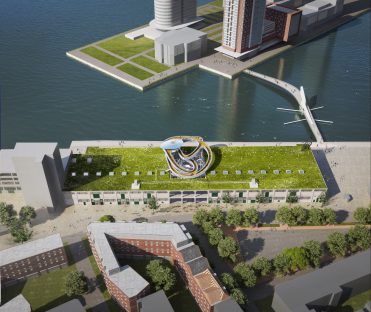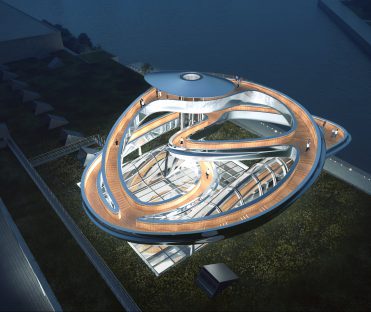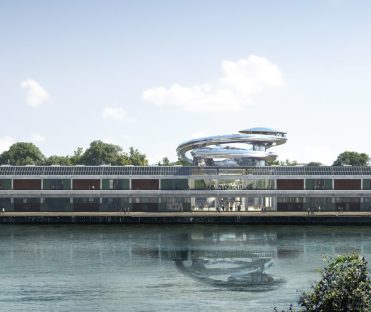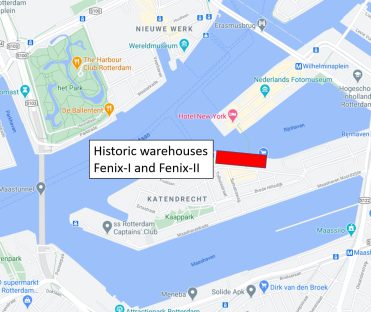Rainfall-runoff system Fenix-II warehouse, Rotterdam
DOWNLOAD PROJECT SHEET
Design rainfall-runoff system on behalf of viewing platform “Tornado” on top of the renovated Fenix-II Warehouse: hydraulic computations and Final Design advice

Stichting Droom en Daad, Rotterdam, the Netherlands

Fenix II Warehouse, Rotterdam

2020
Hydraulic analysis and design advice viewing platform "Tornado"
Initiated by Stichting Droom en Daad, the Fenix-II Warehouse (Katendrecht, Rotterdam) is renovated and re-developed into FENIX. The first floor will contain the new FENIX Migration Museum and the ground floor will provide a mix of creative, culinary and cultural activities. The former warehouse of the Holland-Amerika Line (HAL) is of great historic value for the port and city of Rotterdam. The roof will house a viewing platform designed by MAD Architects (The Tornado), from which a 360-degree view of Rotterdam is provided. Based upon hydraulic computations, Svašek advised about the design of the rainfall-runoff system of this viewing platform.
The abrupt alternation of steep and shallow slopes and staircases, as well as the limited space for runoff within the construction and the positioning of the Tornado upon an existing building, especially make this rainfall-runoff design a unique and complex task, which requires a lot of custom-made solutions.
Based upon a full inventarization of all hydraulic aspects that play a role in the runoff system, a series of general design advices has been developed at first which have been further elaborated during the Final Design Stage, in cooperation with other design parties (EGM, DWA, CSM, MAD Architects, CIG, IMD, Bosman). With the help of a hydraulic analysis, the effectivity of the rainfall-runoff system has been assessed; the required capacities, pipe diameters and other system dimensions (e.g. emergency spill-ways) have been determined. Three key aspects of the final design are:
- Controlled runoff from (steep) staircases and pathways by permeable floor materials;
- Sufficient backup capacity en backup flow routes throughout the drainage system;
- As much spreading in the vertical transport towards the roof as possible, in order to minimize the chance of flooding inside the building.
The hydraulic analysis included the impact of dynamic effects like supercritical flow, roll waves and centrifugal forces inside the rainfall drainage system.
Harmen Talstra
Project leader

MORE INFORMATION ABOUT SVAŠEK OR OUR EXPERTISES?
Please contact us or make an appointment.
CONTACT US



